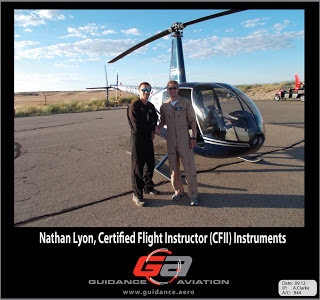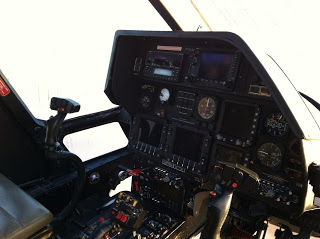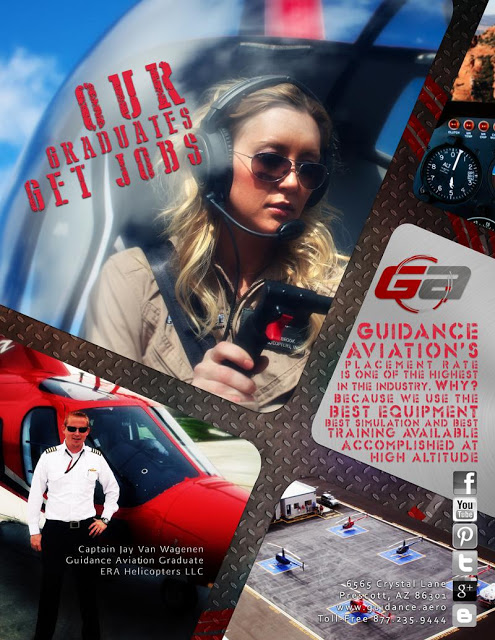by Guy Roginson
There is a lot of information to learn when becoming a helicopter pilot. Just talking like a pilot takes time as “pilot speak” is filled with an extraordinary amount of abbreviations and terminology that take months to master. Of course, prospective helicopter flight students want to jump right into talking and walking like a pilot. Let’s face it, they also want to impress the hottie standing in front of them (Angel 12 o’clock) during a WTO (Whiskey-Tango-Operation) at the local watering hole (Landing Strip).
 One of the most common questions prospective students ask once they have chosen their helicopter flight school is, “What can I do now to get a headstart on my training?” That’s a great question as it shows initiative and passion. But, instead of jumping right into your “POH” (Pilot Operating Handbook), the FAA’s (Federal Aviation Administration) ADM (Aeronautical Decision Making), and other aviation related materials that will be pounded into your head over the next 20 months or so, start with the most important component of flying: That’s you. The pilot in training and future PIC (Pilot In Command).
One of the most common questions prospective students ask once they have chosen their helicopter flight school is, “What can I do now to get a headstart on my training?” That’s a great question as it shows initiative and passion. But, instead of jumping right into your “POH” (Pilot Operating Handbook), the FAA’s (Federal Aviation Administration) ADM (Aeronautical Decision Making), and other aviation related materials that will be pounded into your head over the next 20 months or so, start with the most important component of flying: That’s you. The pilot in training and future PIC (Pilot In Command).
There you go, you’ve already got POH, FAA, ADM, and PIC covered – you’re on your way to building your Pilot Speak Vocabulary (PSV).
 In order to land that first job as a professional helicopter pilot, it is going to take more than skill with the collective, aeronautical knowledge, and swagger at a WTO to kick open that first door and tap some skids on that pad. The prospective employer is going to take a good look at you and listen to you. After all, you do want to fly multi-million dollar, turbine helicopters along the Grand Canyon or over The Gulf of Mexico. Do you know how to talk to people? Have you ever practiced presenting yourself in front of a group of people? Additionally, what have you done during your flight training to network yourself with potential employers and industry leaders?
In order to land that first job as a professional helicopter pilot, it is going to take more than skill with the collective, aeronautical knowledge, and swagger at a WTO to kick open that first door and tap some skids on that pad. The prospective employer is going to take a good look at you and listen to you. After all, you do want to fly multi-million dollar, turbine helicopters along the Grand Canyon or over The Gulf of Mexico. Do you know how to talk to people? Have you ever practiced presenting yourself in front of a group of people? Additionally, what have you done during your flight training to network yourself with potential employers and industry leaders?
Whoa, where do you start? Networking? Talking? Presenting? Take it easy, you’ll get accustomed to all this multi-tasking during your flight training. Make a checklist to begin since you’ll be using a lot of checklists while flying. Let’s call this one CTS, “Checklist To Success”. Take note: Don’t confuse “CTS” with a future abbreviation you’ll be learning “PTS” or, Practical Test Standards. Now you can add “PTS” to your Whiskey Tango swagger.
Checklist To Success (CTS): Tools for networking and landing that first helicopter flying job.
1. LinkedIn: LinkedIn operates the world’s largest professional network on the Internet with more than 238 million members in over 200 countries and territories. Some good helicopter aviation groups on LinkedIn include: Guidance Aviation, Helicopter Association International, Professional Helicopter Pilots Association, Helicopter Industry Professionals and HeliOps Magazine. There is also a “Jobs” feed that you can subscribe to.Note: Even though you are just starting your training, subscribe to helicopter jobs feeds anywhere you can find them to gain insight to what employers are looking for and expecting.
2. Facebook: Everyone is basically there from your buddy whom you may have served with overseas in the military to the leading helicopter publication “Vertical Magazine”. Get networked with these pages to stay in tune with the latest news, regulations, and of course, career opportunities. Some great pages include: Vertical Magazine, Helicopter Association International, Just Helicopters, and Guidance Aviation. Do a pages search in Facebook to find reputable and relevant helicopter aviation pages.
Note: While participating in any online discussion, forum, or social media page, make it a practice to “Share Your Passion, Not Your Pain”. Negativity, slurs, f-bombs, s-bombs, argumentative talk, and criticism don’t go over well with potential employers. Even getting political may hurt you. Keep your “Pilot Speak” passionate and positive – that wins every time. There are some interesting statistics on what employers look at in the social media realm as they are interviewing candidates. Check out one of our previous articles:
Online Guidance To Career Placement in Aviation.
3. Career Services: Introduce yourself to the people that manage the Career Services at your school. A good career services department will help with:
- Resume Writing
- Cover Letters
- Career placement assistance
- Research on prospective employers
- Practice / mock interviews and role playing
Note: Do not wait until last minute to start drafting a cover letter and resume. It takes time to develop these things. Master and complete them as early as possible. Again, your school’s career services personnel will help you. Also, just as you will participate in study groups during your flight training, create and participate in professional development groups with other flight students at your school in order to conduct interview role playing and practice presentations. Everyone, especially employers, love confidence and preparedness.
4. Get Involved: Your flight training and studies come first. If you have the time, get involved with your school. Offer help wherever it is needed. After all, your first job just might be with your current flight school as a CFI-I (Certified Flight Instructor – Instrument). Offering to help may just lead to some part time work at the school before your earn your CFI-I. Along the way, you may just learn something.Note: You can now add CFI-I to your PSV.
Stay passionate, remain positive, and get involved. Before you know it, they’ll be calling you PIC with a CFI-I.
Guidance Aviation provides high altitude helicopter and fixed wing flight training utilizing the newest aircraft and best equipment available. For more information, go to http://www.guidance.aero



